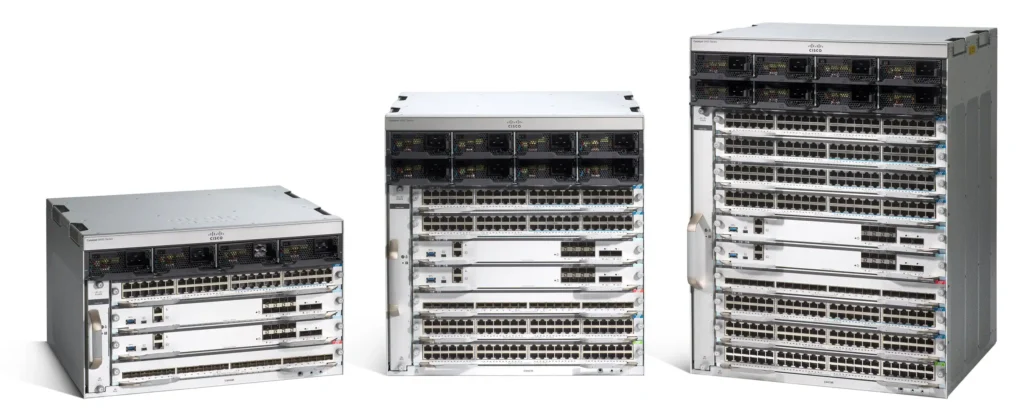The Cisco Catalyst 9400 series is a powerful modular switch designed to address the needs of today’s networks. However, while the capabilities of the switch can support a variety of applications, there are a variety of security steps to impose on your switch to ensure the integrity of your network (and sensitive data). In this guide, we have outlined the security best practices for your Cisco Catalyst 9400 switch, so that you can maintain the security of your network from threat vulnerabilities.
1. What are the Security Best Practices for Cisco Catalyst 9400?
To begin securing your Cisco Catalyst 9400, we will focus on initial basic configuration tasks. Obviously the first step is to set up a password for privileged EXEC mode and global configuration mode. You should make sure it is a strong password, and that it’s not used anywhere else. Although a strong password should suffice to keep unauthorized users off the switch, if you are able, you may want to enable SSH and disable Telnet to secure management traffic.
Next, make sure you properly configure your console and vty lines. Use ACL’s to limit access to trusted IP addresses. When possible, hard-code only the admin IPs that require management access. Also, change the default enable and root passwords. Perform this before placing the device in the production environment.
2. How to Apply VLAN Security on the Cisco Catalyst 9400?

Securing your VLANs is another important step in securing your Cisco Catalyst 9400. First of all, you want to separate your network traffic with different VLANs. For different departments or segments of your network, separate VLANs will ensure that access is restricted as much as possible to the unauthorized party between sections of the network.
After creating the VLANs, enable pruning to limit unnecessary broadcast traffic from needing to cross segments. Next, black skin devices such as printers, cameras, and other sensitive devices, with private VLANs (PVLANs). Finally, apply port security to restrict how many devices may connect to specific ports.
Lastly, you will ensure that the VLAN interfaces have strict ACLs so that unauthorized devices cannot get on the network, and this decreases the attack surface for malicious actors.
3. What Advanced Security Features Can You Use to Secure the Cisco Catalyst 9400?
There are many advanced security features on the Cisco Catalyst 9400 that can enhance the protection of your network. For example, by implementing 802.1X authentication, only authenticated devices can connect to the network with this authentication standard. 802.1X authentication is very useful at preventing an unauthorized device from gaining access to your infrastructure.
Another advance feature would be to enable Dynamic ARP Inspection (DAI) to help protect against ARP spoofing. DAI allows only valid ARP requests to tell the network what it should be which avoids attackers from being able to ARP poison the network.
You should also configure Port Security to limit the number of MAC Addresses learned on each port or interface. Please set up DHCP Snooping so unauthorized DHCP servers cannot give clients the wrong IP address.
4. Ways to Safeguard Cisco Catalyst 9400 from DDoS Attacks?

Distributed Denial of service (DDoS) attacks can flood your network, knocking it offline. To help protect your Cisco Catalyst 9400 from DDoS attacks, enable Control Plane Policing (CoPP) so that you can limit the traffic sent to the control plane to manage and mitigate the portions of the unwanted/unsolicited path.
Further, configure Storm Control to safeguard broadcast, multicast, and unicast storms that will congest the network, limiting your outage potential. Configure Rate Limiting to help control traffic flow while still ensuring that you cannot be consumed by the flood of traffic.
Be cautious about any suspicious behavior on your switch. Set up alerts that will notify of potential DDoS attacks. Routinely look for unusual activity in switch logs. Observing traffic patterns can alert you to network flooding. This lets you identify and react to potential exploits quickly.
Conclusion
It is vital to secure your Cisco Catalyst 9400 to maintain a healthy and efficient network. By applying best practices including establishing strong passwords, enabling best security features, and securing your VLANs, your infrastructure will be fortified against threats.
Further, using Cisco Catalyst 9400 built-in features such as 802.1X authentication and CoPP will secure your network and allow only authorized users and devices access.



